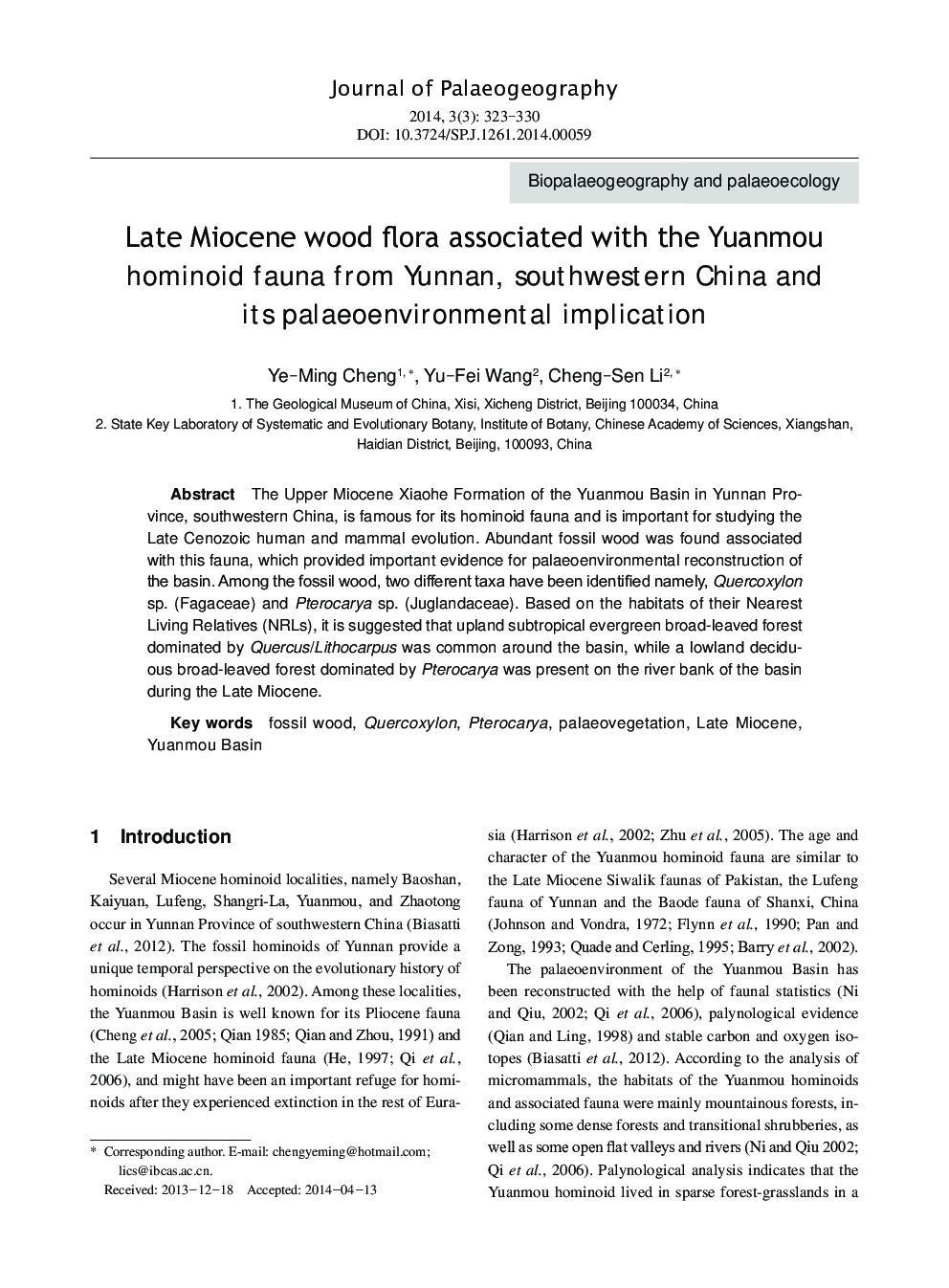| Article ID | Journal | Published Year | Pages | File Type |
|---|---|---|---|---|
| 4581024 | Journal of Palaeogeography | 2014 | 8 Pages |
The Upper Miocene Xiaohe Formation of the Yuanmou Basin in Yunnan Province, southwestern China, is famous for its hominoid fauna and is important for studying the Late Cenozoic human and mammal evolution. Abundant fossil wood was found associated with this fauna, which provided important evidence for palaeoenvironmental reconstruction of the basin. Among the fossil wood, two different taxa have been identified namely, Quercoxylon sp. (Fagaceae) and Pterocarya sp. (Juglandaceae). Based on the habitats of their Nearest Living Relatives (NRLs), it is suggested that upland subtropical evergreen broad-leaved forest dominated by Quercus/Lithocarpus was common around the basin, while a lowland deciduous broad-leaved forest dominated by Pterocarya was present on the river bank of the basin during the Late Miocene.
